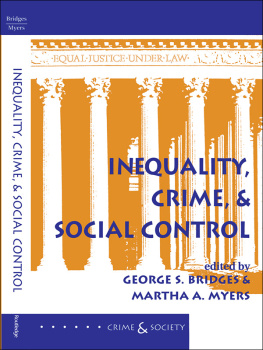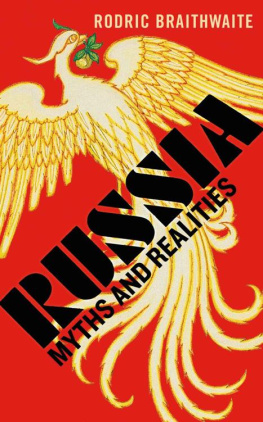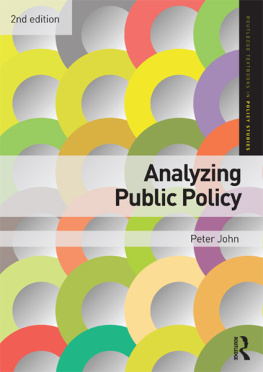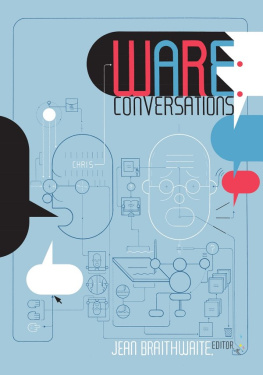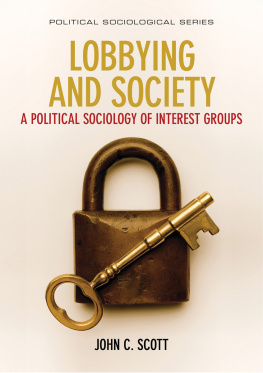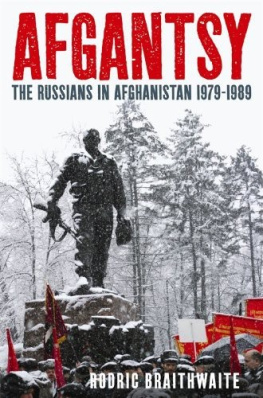Routledge Revivals
Inequality, Crime, and Public Policy
First published in 1979, Inequality, Crime, and Public Policy integrates and interprets the vast corpus of existing research on social class, slums, and crime, and presents its own findings on these matters. It explores two major questions. First, do policies designed to redistribute wealth and power within capitalist societies have effects upon crime? Second, do policies created to overcome the residential segregation of social classes have effects on crime? The book provides a brilliantly comprehensive and systematic review of the empirical evidence to support or refute the classic theories of Engles, Bonger, Merton, Cloward and Ohlin, Cohen, Miller, Shaw and McKay, amongst many others. Braithwaite confronts these theories with evidence of the extent and nature of white collar crime and a consideration of the way law enhancement and law enforcement might serve class interest.
Inequality, Crime, and Public Policy
John Braithwaite
First published in 1979
by Routledge & Kegan Paul Ltd
This edition first published in 2013 by Routledge
2 Park Square, Milton Park, Abingdon, Oxon, OX14 4RN
Simultaneously published in the USA and Canada
by Routledge
711 Third Avenue, New York, NY 10017
Routledge is an imprint of the Taylor & Francis Group, an informa business
1979 John Braithwaite
All rights reserved. No part of this book may be reprinted or reproduced or utilised in any form or by any electronic, mechanical, or other means, now known or hereafter invented, including photocopying and recording, or in any information storage or retrieval system, without permission in writing from the publishers.
Publishers Note
The publisher has gone to great lengths to ensure the quality of this reprint but points out that some imperfections in the original copies may be apparent.
Disclaimer
The publisher has made every effort to trace copyright holders and welcomes correspondence from those they have been unable to contact.
A Library of Congress record exists under ISBN: 79040850
ISBN 13: 978-0-415-85812-0 (hbk)
ISBN 13: 978-0-203-79643-6 (ebk)
Inequality, crime, and public policy
John Braithwaite
First published in 1979
by Routledge & Kegan Paul Ltd
39 Store Street,
London WC1E 7DD,
Broadway House,
Newtown Road,
Henley-on-Thames,
Oxon RG9 1EN and
9, Park Street,
Boston, Mass. 02108, USA
Set in IBM Journal by
Hope Services
Abingdon, Oxon
and printed in Great Britain by
Lowe & Brydone Ltd
Thetford, Norfolk
John Braithwaite 1979
No part of this book may be reproduced in any form without permission from the publisher, except for the quotation of brief passages in criticism
British Library Cataloguing in Publication Data
Braithwaite, John
Inequality, crime and public policy.
1. Crime and criminals 2. Social classes 3. Capitalism
I. Title
364.256 HV6 169 79-40850
ISBN 0 7100 0323 4
To my parents
This book, based on the authors PhD thesis, attempts to integrate and interpret the vast corpus of existing research evidence on social class, slums and crime. The goal is to seek answers to two policy questions. First, will policies to redistribute wealth and power within capitalist societies have effects upon crime? Second, will policies to overcome the residential segregation of social classes have effects on crime?
To attempt to answer these questions research evidence from various capitalist societies is jointly overviewed, with particular emphasis upon evidence from the United States, Great Britain and Australia. A basic assumption of the book is that the crime problems of differing capitalist societies have a similar class basis. It will be seen that in very few cases have cross-national differences emerged from empirical criminology with regard to variables which connect class to crime. Nevertheless, where there are problems in extrapolating findings from one nation to others, an attempt is made to discuss these difficulties.
There has been so much empirical research and theorizing on class, slums and crime that an attempt to pull it all together into a framework which makes it possible for policy-makers to make judgments on what kinds of egalitarian reforms within capitalism might reduce crime is long overdue. The reader will discover that when all of the evidence is assembled there are a number of surprises in store. These surprises have regrettably remained submerged because criminologists have in the past shown scant interest in systematic reviews of the evidence on egalitarian reform as a solution to crime. The protagonistsconservatives, social democratic reformers, and Marxistshave preferred to snipe at each others work from entrenched ideological positions. The question of whether a more equal society would be a less criminal society is resolved to everyones satisfaction at an ideological level. All parties selectively use data supportive of their position as a tactical tool in the ideological battle. The author is not immune from an ideological commitment. He is a socialist. But an attempt has been made in this book to review non-selectively all the evidence on key empirical questions in the policy analysis.
examines the value for crime reduction of policies to equalize wealth and power.
The first chapter defines the main constructs of concern and discusses the problems of operationalizing these constructs.. The implications of these theories for the effect on crime of egalitarian policies are also explored.
on the effect of the residential segregation of classes on crime, and discusses the policy options available to social planners who might set out to reduce crime through fostering class-mix.
draws together conclusions about the efficacy of greater equality as a policy for crime reduction.
Many people have offered criticism on the ideas expressed in this book. However, special recognition is due to my PhD supervisor, Paul Wilson, who has always been critical, but always encouraging.
Other people who deserve special mention for reading and criticizing earlier drafts of the work are Gilbert Geis, Duncan Chappell, John Western, Henry Law, Kay Bussey, Boris Crassini, June Fielding, Greg Smith, Mike Emmison, Diane Gibson, Richard Gaven, Bill Gibson and Jake Najman. My most painstaking and constructive critic has been my wife, Valerie.
I am indebted to the YMCA for allowing me to include in this book data which I collected while employed by them at the University of Queensland. Officers of the Department of Childrens Services also gave great assistance in the compiling of data on court-recorded delinquency.
I would like to thank Annette Waters and Jenny McDowall for their patience and hard work in typing the manuscript.
Defining the problem
The research goals
For many years criminologists have been preoccupied with social inequality as an explanation of crime. The emphasis in this preoccupation has shifted from an early stress upon ecological (or inter-area) inequality to inequality among individuals. Discussions of the slum as a cause of crime and individual poverty as a cause of crime have usually been intertwined, often in a confusing way. It is important that confounding between the two levels of analysis be untangled, because policies which are appropriate for tackling the problem of ecological inequality are quite different from policies to reduce inequalities among individuals. to an analysis of inequalities among individuals.






